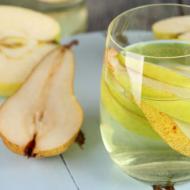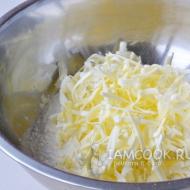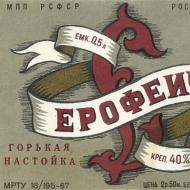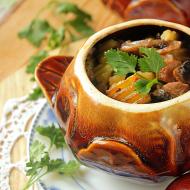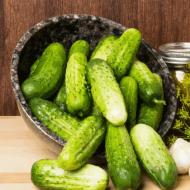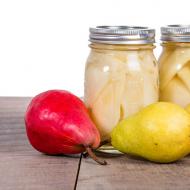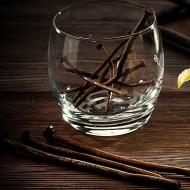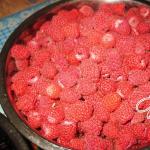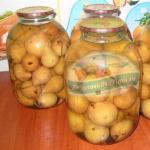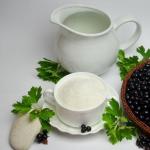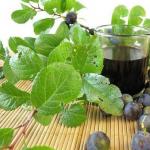
"Erofeich" - traditional Russian herbal bitters
Erofeich - herbal tincture of the Russian nobility, appeared at the beginning of the 18th century. Due to the high concentration of essential oils, it had a specific bitter taste and was consumed in small quantities (maximum 2 glasses) before meals to increase appetite. Erofeich ate fatty meat and fish dishes. A distinctive feature - the tincture was prepared on the basis of grain moonshine 3-5 distillations with a strength of 60-80 degrees.
Many nobles were interested in the preparation of alcoholic beverages, they created distilleries on the estates, on which they conducted experiments. Significant financial resources, a sufficiently high level of education and the availability of free time made it possible to improve the equipment for distillation. Apparatuses appeared on which, by means of repeated distillations, it was possible to obtain moonshine (in those days it was called “bread wine”) with a strength of up to 80%. The stronger the moonshine was at the exit, the higher the level of mastery of the distiller was considered.
The finished distillate was not diluted with water, it was considered blasphemy. To soften the burning alcohol taste, it was insisted on herbs and roots. Each landowner had his own "signature" recipe, which was kept secret.
Until the 1870s, erofeich was considered an elite alcoholic drink, but the appearance of a distillation column significantly reduced the cost of alcohol production, distilling moonshine 3-5 times to increase the strength was no longer required. Along with the technology for obtaining pure distillate, the recipes for infusing herbs were also forgotten. Simple drinks with a more refined taste have come into fashion. Still, erofeich was too specific.
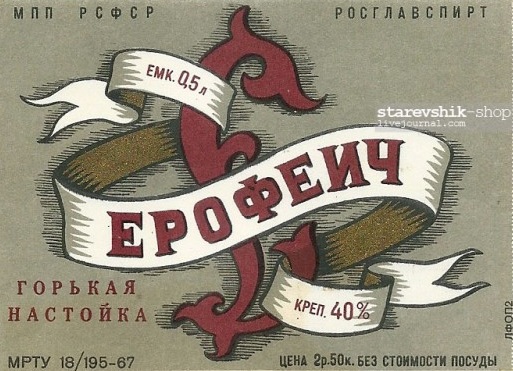 The Soviet industry tried to launch the production of Erofeich, but the tincture never became popular.
The Soviet industry tried to launch the production of Erofeich, but the tincture never became popular. There are 3 versions of why herbal tinctures began to be called "Erofeichs":
1. Russian barber. According to legend, the barber Yerofey lived in China for several years as part of a Russian mission. In his free time, he studied Chinese medicine. In 1767 Erofei returned to his homeland, where he cured Count Aleksey Grigoryevich Orlov (General of Catherine II) of a serious stomach ailment with a tincture of his own preparation.
After Orlov's victory over the Turkish fleet in 1770, a tincture of ginseng root (presumably) and other herbs became famous. As a thank you, the barber received from the count the right to sell a drink called "Erofeich" throughout the Russian Empire.
According to the historian Pokhlebkin, ginseng must be included in the Erofeich tincture, since it is of Chinese origin. The problem is that ginseng grows only in Altai, the Urals and the Far East, and the tincture was made all over Russia, so it was hardly the main ingredient. Alternatively, ginseng could be replaced with galangal (Potentilla root).
2. Enterprising merchant. According to another version, the tincture was named after Vasily Yerofeyich, a major merchant in wine and other alcoholic beverages. To increase sales of a new product, Vasily invented a legend about a barber who cured the count. Buyers were confident in the usefulness of the tincture.
3. The name of the plant. In some regions of Russia, "Erofey" was called the plant hypericum perforatum - St. John's wort. And in Dahl's dictionary, the word "Erofey" is listed as one of the names of the perennial plant Verbáscum nígrum - black mullein. Perhaps one of these plants was part of the tincture, but again, only in certain regions.
After getting acquainted with the history of the tincture, it becomes clear that the classic recipe for erofeich does not exist. This is the common name for herbal tinctures with strong alcohol. Each landowner used in the drink those herbs and spices that grew or were sold in his area.
Erofeich's recipe
For the sake of historical accuracy, the recipe uses herbs mentioned in the first and third versions of the origin.
Ingredients:
- moonshine (alcohol 60-80%) - 1 liter;
- chopped root of galangal (cinquefoil) - 10 grams;
- St. John's wort - 5 grams;
- pepper (English) mint - 5 grams;
- chamomile - 5 grams;
- wormwood - 1 gram;
- anise - 10 grams.
You can add (or remove) any herbs to the composition, creating a unique recipe. Traditionally, sugar was not used in Erofeiche, the tincture should be bitter. In some rare varieties, honey is found. It is not recommended to use vodka, because its strength is too low. The minimum alcohol content in the alcohol base is 60%.
Cooking:
1. Put herbs in a jar for infusion.
2. Pour strong moonshine or alcohol. Mix.
3. Close the jar tightly with a lid. Put for 14-16 days in a warm dark place. Shake every 2-3 days.
4. Filter the infusion through 3-4 layers of gauze or thick cloth, squeezing the cake well.
5. Pour the finished erofeich into bottles for storage (preferably from dark glass), close tightly. Before tasting, leave for 2-3 days to stabilize the taste.
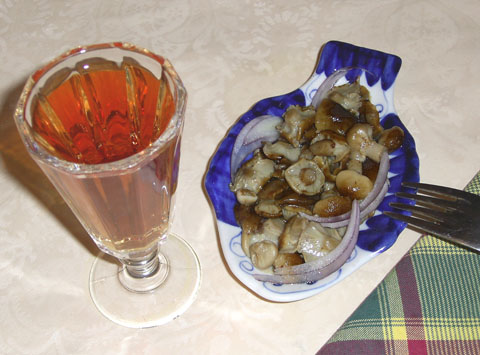
Store in a dark place. Shelf life up to 5 years. The strength depends on the alcohol used, usually 3-5% is lost during infusion.

